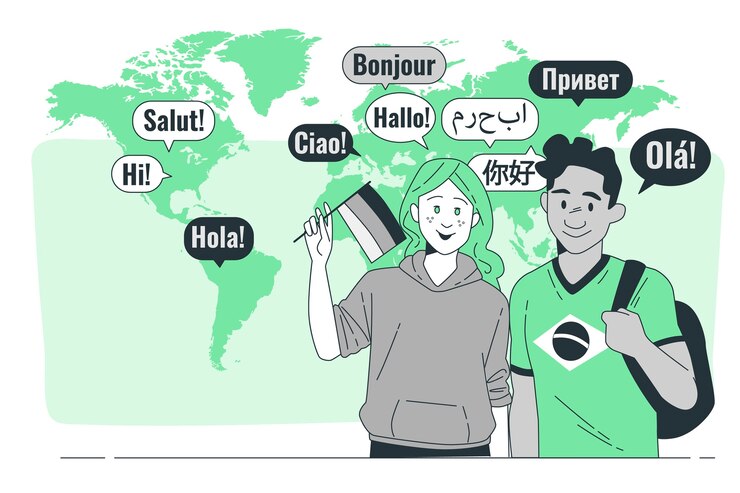In a world interconnected through digital threads, the significance of translation cannot be overstated. The World of Translation becomes a pivotal bridge fostering communication, understanding, and collaboration as we traverse linguistic boundaries.
The Evolution of Translation
Historical Milestones
Translation’s roots run deep in human history, from ancient civilizations to the Renaissance, where texts were translated for broader accessibility and knowledge dissemination.
Technological Advancements
The 21st century witnesses a digital revolution in translation, with technology playing a crucial role in enhancing efficiency and accuracy.
Importance in a Globalized World
Cultural Exchange
Translation serves as a conduit for diverse cultures to exchange ideas, literature, and art, creating a rich tapestry of global understanding.
Business Expansion
In the corporate realm, translation facilitates expansion into new markets, enabling businesses to resonate with local audiences.
Challenges in Translation
Linguistic Nuances
Navigating the intricate nuances of languages requires a deep understanding of context, idioms, and linguistic subtleties.
Cultural Sensitivity
Translation is an art that demands sensitivity to cultural differences, ensuring that messages resonate positively across diverse communities.
The Rise of Machine Translation
Pros and Cons
While machine translation offers speed and efficiency, it lacks the nuanced comprehension and emotional intelligence that human translators bring.
Impact on Human Translators
The integration of AI raises questions about the future role of human translators and the need for a harmonious collaboration between man and machine.
Human Touch in Translation
Emotional Intelligence
Human translators infuse emotion and cultural context into their work, making the message both linguistically accurate and emotionally resonant.
Creative Adaptation
In literary and creative translations, the human touch shines through in adapting metaphors, idioms, and cultural references without losing the essence.
Industries Relying on Translation
E-commerce
Global online markets rely on translation for product descriptions, customer support, and seamless user experiences.
Healthcare
Medical translations ensure accurate communication between healthcare professionals and patients, avoiding misunderstandings that could have severe consequences.
Legal
Legal documents demand precision, and translation ensures that agreements and contracts maintain integrity across languages.
The Art of Localization
Tailoring for Target Audiences
Localization goes beyond translation, customizing content for specific regions to ensure cultural relevance and resonance.
Adapting Cultural References
Successful localization considers the cultural context, ensuring that humor, references, and imagery align with the target audience’s sensibilities.
Tips for Effective Translation
Contextual Understanding
Translators must grasp the context to convey the intended meaning accurately, emphasizing the importance of cultural and situational awareness.
Continuous Learning
Translators must stay abreast of language evolution, emerging idioms, and industry-specific terminologies in a dynamic linguistic landscape.
Future Trends in Translation
AI Integration
The future sees a tighter integration of AI in translation processes, enhancing efficiency while presenting new challenges for the human touch.
Enhanced Language Processing
Advancements in language processing technologies promise more accurate and context-aware translations, reshaping the landscape of cross-cultural communication.
Impact on Global Communication
Bridging Language Gaps
Translation is a powerful tool, bridging language gaps and fostering a more inclusive global conversation.
Fostering Understanding
By breaking down linguistic barriers, translation promotes understanding, empathy, and collaboration on a global scale.
Translator’s Toolkit
Language Pairs
A translator’s proficiency in specific language pairs forms the foundation for accurate and meaningful communication.
Software and Tools
From translation memory software to language-specific resources, translators leverage various tools to enhance efficiency and maintain consistency.
Case Studies: Successful Translations
Coca-Cola’s Marketing Campaigns
Examining how Coca-Cola effectively adapts its marketing messages for diverse audiences, creating resonance worldwide.
International Bestsellers
The literary world showcases successful translations, with international bestsellers seamlessly capturing the original work’s essence.
Personal Growth in Translation
Pursuing a Career
Translation opens doors to diverse career opportunities, from freelancing to working with international organizations, offering personal and professional growth paths.
Educational Opportunities
The academic realm provides avenues for learning and specialization in translation studies, fostering a community of skilled language professionals.
Conclusion
In the vast tapestry of global communication, the World of Translation stands as a beacon, illuminating pathways for understanding, collaboration, and shared human experience. As technology advances and languages evolve, translation remains indispensable, ensuring our diverse voices echo across linguistic borders.
FAQs
How has technology transformed the field of translation?
Technology has revolutionized translation, enhancing speed and accuracy while posing challenges related to the human touch in linguistic endeavors.
What industries benefit the most from translation services?
E-commerce, healthcare, and legal sectors rely on translation to bridge communication gaps in their global operations.
Can machine translation replace human translators entirely?
While AI and machine translation offer efficiency, human translators’ unique nuances and emotional intelligence remain irreplaceable.
Why is cultural sensitivity crucial in translation?
Cultural sensitivity ensures that translated content aligns with the values and norms of diverse audiences, preventing misinterpretations.
How can individuals pursue a career in translation?
Aspiring translators can explore educational opportunities in translation studies, hone language pairs, and stay updated on industry trends for a rewarding career.



